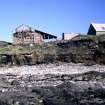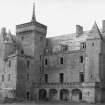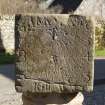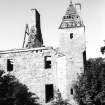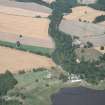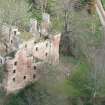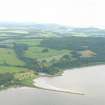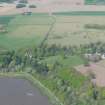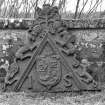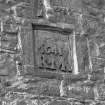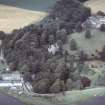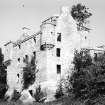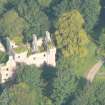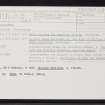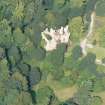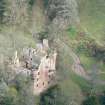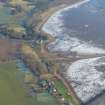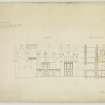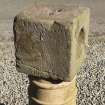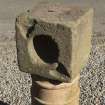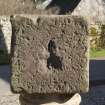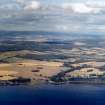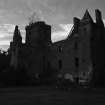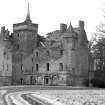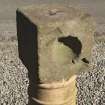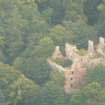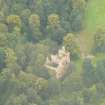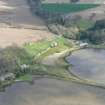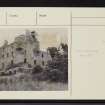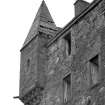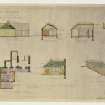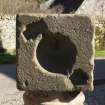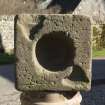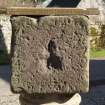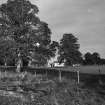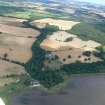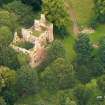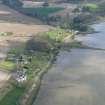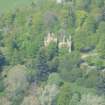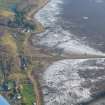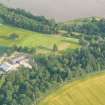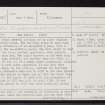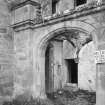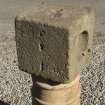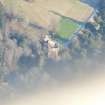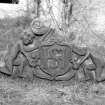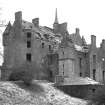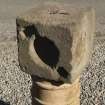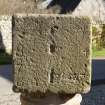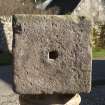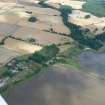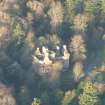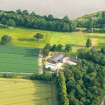Pricing Change
New pricing for orders of material from this site will come into place shortly. Charges for supply of digital images, digitisation on demand, prints and licensing will be altered.
Redcastle
Castle (Medieval), Motte (Medieval)(Possible), Tower House (Medieval)
Site Name Redcastle
Classification Castle (Medieval), Motte (Medieval)(Possible), Tower House (Medieval)
Alternative Name(s) Ederdour; Redcastle Policies
Canmore ID 12662
Site Number NH54NE 5
NGR NH 58386 49508
Datum OSGB36 - NGR
Permalink http://canmore.org.uk/site/12662
- Council Highland
- Parish Killearnan
- Former Region Highland
- Former District Ross And Cromarty
- Former County Ross And Cromarty
NH54NE 5.00 58386 49508
(NH 5838 4951) Red Castle (NAT)
OS 6" map, (1957)
NH54NE 5.01 NH 58309 49523 Lodge
NH54NE 5.02 NH 58550 49648 Stable Square/Clocktower Cottage (Redcastle Mains)
NH54NE 5.03 NH 58587 49692 Slaughter house (Redcastle Mains)
NH54NE 5.04 NH 58955 50118 Factor's House (Redcastle Mains)
NH54NE 5.05 NH 58590 49637 Steading (Redcastle Mains)
NH54NE 5.06 NH 58297 49502 Icehouse
NH54NE 5.07 NH 58626 49729 Kennels
NH54NE 5.08 NH 58612 49446 Icehouse (2)
For Gardener's House (Redmount, Milton, at NH 58300 49413), see NH54NE 46.
A mansion in which several portions of an older edifice have been incorporated. The building seems to have been originally a structure of an elongated L plan, with a staircase in the re-entering angle. The hall would in that case occupy the large central apartment, with private room at the east end. Two angel turrets on the west wing are of some age. Probably not earlier than the 16th. c., the castle, at the end of a steep sided promontory, occupies the site of a much older structure. It was here that William the Lion, in the 12th.c., erected the fortress of Ederdour. Redcastle belonged in 1230 to Sir John Bysset, in 1278 to Sir Andrew de Besco and in 1455 the Black Isle was annexed to the Crown. It came into the possession of the MacKenzies in 1570 who held it until 1790. It was burned to the ground in 1659 when Rory MacKenzie joined Montrose.
ISSFC 1888; D MacGibbon and T Ross 1889.
Now a roofless shell, but generally as described. A stone in the NE wall bears the initials R.M. and the date 1641.
Visited by OS (A A) 11 January 1971.
NMRS REFERENCE
Redcastle: dangerously derelict
(Undated) information in NMRS.
OWNER: Baroness Burton
ARCHITECT: William Burn 1840-additions and alterations (not carried out as designed)
National Gallery of Scotland holds Nasmyth drawing of Redcastle, reference D3727/84.
Information from Dr Helen Smailes, 27 January 2001.
Rubble with ashlar flush quoins and chamfered margins, 3-storey, approximate L-plan with higher square-plan stair-tower in re-entrant angle and smaller stairtower with canted south-west angle
corbelled to square at third floor at south-east angle of main block. Alterations and additions, William Burn, 1840 3-storey block infilling re-entrant angle of south jamb and main stair tower, plain 2-storey addition with crowstepped gables at north.
Built on site of Castle of Edradour believed to have been built by David, brother of William the Lion, in 1179. It passed into the possession of the Mackenzies by the early 17th century. Rory Mackenzie succeeded to Redcastle in 1629 and his own new strong house of Redcastle was sacked by The Covenanters in 1649. (Scottish Historical Society, WARDLAW MS, 341; Duncan Warrand, SOME MACKENZIE PEDIGREES, 72) In 1790 Redcastle was sold by the Mackenzies to Grant of Shewghie and was sold again in 1824 to Sir William after his death to Colonel Hugh Duncan Baillie of Dochfour who commissioned the Burn remodelling. (Joseph Mitchell, REMINISCENCES OF MY LIFE IN THE HIGHLANDS, i, 251). (Historic Scotland)
Field Visit (June 1979)
Redcastle NH 583 495 NH54NE 5
The castle of Ederdour or Eddyrdor, which was built by William the Lion in 1179, is said to have stood here. Parts of a 16th-century L-plan tower-house are incorporated in the 19th-century mansion which now occupies the site.
RCAHMS 1979, visited June 1979
Transactions of the Inverness Scientific Society and Field Club, ii (1880-3), 241-3; MacGibbon and Ross 1887-92, iii, 623-5; Simpson and Webster 1972, 186, no. 30
Field Visit (2013 - 2014)
The castle walls are cracked in places from top to bottom. The structure is unsafe and is fenced off. The fence has been breached in three places.
Visited by Scotland's Coastal Heritage at Risk (SCHARP) 2013
Field Walking (January 2015 - March 2015)
NH 53 48, NH 53 49, NH 54 48, NH 54 49, NH 55 48, NH 55 49 Fieldwalking continued from January to March 2015 in the period between ploughing and sowing. The aim is to walk every ploughed field within the Tarradale study area at least twice. The fields nearest Tarradale House have now been walked twice and in 2015 the project concentrated on fieldwalking further W around Gilchrist Church, the old parish church of the former parish of Tarradale (now a mausoleum). Increased presence of medieval pottery was identified in the fields close to the church along with a specific concentration of medieval pottery suggestive of a homestead site. A silver sixpence of Queen Elizabeth I (dated 1581) was found near Gilchrist Church.
Stone axe probably from Creag na Caillich axe factory, near Killin The usual range of lithics was found throughout the wider study area, including artefacts identifiable as Mesolithic, as well as Neolithic and Bronze Age projectile points, blades and scrapers. Two barbed and tanged flint arrowheads were found as well as a broken leaf shaped arrowhead. A small piece of Rum bloodstone debitage was found but the most significant lithic find of the fieldwalking season was the major part of a polished green-stone axe, probably from Creag na Caillich, Killin. All lithic finds are plotted by GPS and a distinct pattern of concentration of Mesolithic type lithics has been identified immediately inland of a post-glacial abandoned shoreline which is present today as a degraded sandy cliff. A number of shell middens has been identified above and below this former shoreline and fieldwalking identified an additional shell midden site near Bellevue Farm.
In addition to fieldwalking, NOSAS members also sorted and identified medieval and post-medieval pottery, slag, nails and other metals found by fieldwalking This indoor activity is helping to create an understanding of the source of the medieval and post-medieval pottery and other found artefacts which can be used for further analysis as well as a reference collection. Controlled metal detecting also yielded a considerable number of mainly post-medieval artefacts including 17th-century Scottish coins (ie Turners) as well as shoe buckles, pieces of horse harness, musket balls and other commonplace metal detecting finds. A 13th-century silver penny was found, making a total of six silver pennies found in the area around the inferred site of Tarradale Castle.
The most significant activity of the season was a small excavation on the site of one of the shell middens close to Tarradale House. This was unexpectedly discovered during coring in a small area of the presumed site of Tarradale Castle. The coring had been undertaken to assess the archaeological potential of a small area of land which is not currently ploughed. No trace of the medieval castle was found in the area tested (apart from one piece of medieval pottery) but a test pit revealed a clear layer of shells below an older plough soil. The test pit was extended into a trench, and this showed that the shell midden covered at least 10m² and probably considerably more. This small excavation, in October 2015, showed that the shell midden lay directly on a former raised beach largely made up of cobbles, pebbles and gravel which probably represented materials sorted by marine action from the fluvio-glacial sands and gravels that underlie the whole area of raised estuarine beaches.
In addition to a wide range of molluscs similar to that found in the shell midden investigated four years ago, the current shell midden also yielded a number of pieces of animal bone including two dog teeth as well as an antler tine and small deposits of charcoal and what may be carbonised
seeds. The upper levels of the midden had been disturbed by the creation of rig and furrow, of indeterminate date, and the upper horizon of the midden reflected the wavelike pattern of rigs. Where the furrows had been created, the surviving shell midden was thinner and there was evidence of the furrows having initially been hand dug, with spits of midden material mixed with soil thrown up on top of the surviving rigs. The rig and furrow is just apparent on the
current ground surface and has probably survived as this area is too small for ploughing with modern machinery and has been left fallow.
The main area of the midden appears to be at a height of c9m OD (the midden excavated four years ago was at a height of over 20m OD) and it is not known how the current midden may chronologically relate to the previously investigated midden and other middens in the study area. The southern extent of the midden had clearly been destroyed where modern ploughing had truncated the site. One piece of flint with use wear on two edges was found in the midden, but in the field immediately to the S of the midden a considerable number of lithics and bone fragments have been found during fieldwalking, and they are now considered to have come from near or at least been associated with the recently excavated midden. At the time of writing, post excavation
analysis of the finds had just commenced.
Archive: Tarradale House (currently), Highland HER and National Record of the Historic Environment (NRHE) intended
Funder: NOSAS (In kind plus some post excavation costs)
Eric Grant - NOSAS
(Source: DES, Volume 16)
































































